 W
WThe Amazing Spider-Man is a side scrolling platform action video game released for the Nintendo Game Boy in 1990, published by LJN and developed by Rare based on the Marvel Comics superhero Spider-Man.
 W
WAnticipation is a video board game developed by Rare and released by Nintendo for the Nintendo Entertainment System (NES) in 1988. It is playable in either single-player or multiplayer mode, with up to four players competing against each other and/or computer-controlled opponents.
 W
WArch Rivals is a basketball sports video game released by Midway for arcades in 1989. Billed by Midway as "A Basket Brawl", the game features two-on-two full court basketball games in which players are encouraged to punch opposing players and steal the ball from them. Arch Rivals was the second basketball video game released by Midway, sixteen years after TV Basketball (1974).
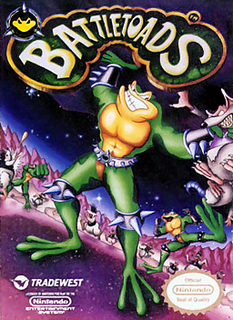 W
WBattletoads is a beat 'em up/platform video game developed by Rare and published by Tradewest. It is the first installment of the Battletoads series and was originally released on 1 June 1991 for the Nintendo Entertainment System. It was subsequently ported to the Mega Drive and Game Gear in 1993, to the Amiga and Amiga CD32 in 1994, and released with some changes for the Game Boy in 1993 in the form of Battletoads in Ragnarok's World. In the game, three space humanoid toad warriors form a group known as the Battletoads. Two of the Battletoads, Rash and Zitz, embark on a mission to defeat the evil Dark Queen on her planet and rescue their kidnapped friends: Pimple, the third member of the Battletoads, and Princess Angelica.
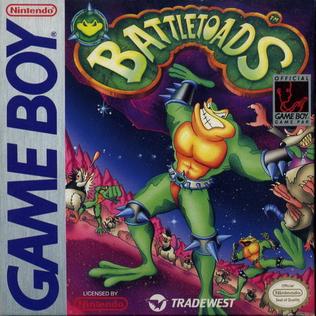 W
WBattletoads is a 1991 action game originally released by Rare in 1991 exclusively for the Game Boy handheld game console from Nintendo. Despite having the same title as the original Battletoads game, Battletoads for Game Boy is a completely different game with other levels. It was never ported to any other systems.
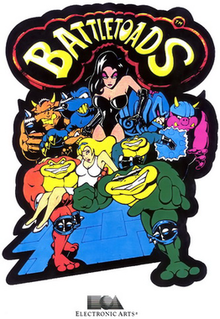 W
WBattletoads Arcade, also known as Super Battletoads or just Battletoads, is a 1994 scrolling beat 'em up arcade game in the Battletoads series developed by Rare and published by Electronic Arts. Up to three players, as the Battletoads, brawl aliens and mutant rodents through six levels to save the universe from the Dark Queen. The game also includes vertical and bonus levels. Each Toad has its own signature attack, and as customary for the series, players can knock enemies towards the screen, breaking the fourth wall.
 W
WBattletoads in Battlemaniacs is a 1993 platforming beat 'em up video game developed by Rare and published by Tradewest for the Super Nintendo Entertainment System, part of the Battletoads series. The game was released in North America in June 1993, in Europe in October 1993 and in Japan on January 7, 1994. It was also ported for the Sega Master System and released exclusively in Brazil. It was released around the same time as Battletoads & Double Dragon, another installment in the series.
 W
WCabal is a 1988 arcade shooter video game originally developed by TAD Corporation and published in Japan by Taito, in North America by Fabtek, and in Europe by Capcom. In the game, the player controls a commando, viewed from behind, trying to destroy various enemy military bases. The game was innovative for the era, but only a mild success in the arcades, and became better known for its various home conversions.
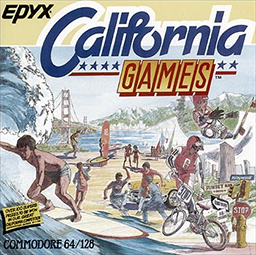 W
WCalifornia Games is a 1987 sports video game originally released by Epyx for the Apple II and Commodore 64, and ported to other home computers and video game consoles. Branching from their popular Summer Games and Winter Games series, this game consists of a collection of outdoor sports purportedly popular in California. The game was successful for Epyx and spawned a sequel.
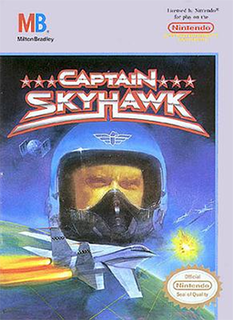 W
WCaptain Skyhawk is a scrolling shooter video game developed by Rare and published by Milton Bradley Company. The game was released in North America in June 1990 and in Europe the next year for the NES. It was also released for the PlayChoice-10 arcade machine.
 W
WCobra Triangle is a 1989 racing, vehicular combat video game developed by Rare and released by Nintendo for the Nintendo Entertainment System. The player controls a weapon-equipped speedboat through 25 levels. Objectives include winning races, saving swimmers, and defusing bombs. The game also includes power-ups and is displayed from a 3D isometric perspective with automatic scrolling that follows the player's movement. The Stamper brothers designed the game and David Wise wrote its soundtrack. Computer and Video Games highly recommended the game and praised its graphics and gameplay. Later reviewers lauded its level diversity and noted its graphical similarities to previous Rare game R.C. Pro-Am. IGN and GamesRadar ranked Cobra Triangle among their top NES games. The latter considered Cobra Triangle emblematic of the NES era's aesthetic. It was also included in Rare's 2015 Xbox One retrospective compilation, Rare Replay.
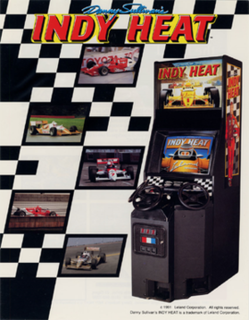 W
WDanny Sullivan's Indy Heat is a 1991 arcade racing game developed and published in the arcades by Leland Corporation. Home versions of the game were eventually released for the NES, Commodore Amiga, Atari ST and Commodore 64. It starred American IndyCar driver Danny Sullivan, and featured the tracks of the CART series of the early 1990s.
 W
WDiddy Kong Racing is a 1997 racing video game developed and published by Rare for the Nintendo 64. The game is set on Timber's Island and revolves around Diddy Kong and his friends' attempt to defeat the intergalactic antagonist, a wizarding pig named Wizpig, through winning a series of races. The player can take control of any of the featured characters throughout the game. Diddy Kong Racing features five worlds with four racetracks each, and the ability to drive a car, hovercraft, or pilot an airplane.
 W
WDigger T. Rock: Legend of the Lost City is a platform video game developed by Rare and published by the Milton Bradley Company for the Nintendo Entertainment System. It was first released in North America in December 1990 and in Europe in 1991. The game centres around the miner Digger T. Rock, as he spelunks various caves and catacombs whilst searching for the mythical Lost City.
 W
WDonkey Kong Country is a 1994 platform game developed by Rare and published by Nintendo for the Super Nintendo Entertainment System (SNES). It is a reboot of Nintendo's Donkey Kong franchise and follows the gorilla Donkey Kong and his nephew Diddy Kong as they set out to recover their stolen banana hoard from King K. Rool and the Kremlings. In 40 side-scrolling levels, the player collects items, defeats enemies and bosses, and finds secrets on their journey to defeat K. Rool. In the multiplayer modes, two players can work together cooperatively or race each other.
 W
WDonkey Kong Country 2: Diddy's Kong Quest is a 1995 platform video game developed by Rare and published by Nintendo for the Super Nintendo Entertainment System (SNES). It was released on 21 November 1995 in Japan, and in December 1995 in North America and Europe. It is the second instalment of the Donkey Kong Country series and serves as a direct sequel to Donkey Kong Country. It was re-released for the Game Boy Advance (GBA) in 2004. The game was made available for download on the Wii's Virtual Console in 2007, and the Wii U's Virtual Console in 2015. It was followed by a sequel, Donkey Kong Country 3: Dixie Kong's Double Trouble!, in 1996.
 W
WDonkey Kong Country 3: Dixie Kong's Double Trouble! is a 1996 platform video game developed by Rare and published by Nintendo for the Super Nintendo Entertainment System (SNES). It was released on 18 November 1996, in North America, on 23 November 1996 in Japan, and on 13 December 1996 in Europe and Australia. It is the third instalment of the Donkey Kong Country series and serves as a direct sequel to Donkey Kong Country 2: Diddy's Kong Quest. It was also re-released for the Game Boy Advance (GBA) in 2005. The game was made available to download on the Wii's Virtual Console service in 2007, as well as for the Wii U's Virtual Console in 2014.
 W
WDonkey Kong Country: Tropical Freeze is a 2014 platform game developed by Retro Studios and published by Nintendo for the Wii U console. The fifth installment in the Donkey Kong Country series, Tropical Freeze is the direct sequel to the 2010 Wii game Donkey Kong Country Returns and was released in February 2014. An enhanced port for the Nintendo Switch was released in May 2018.
 W
WDonkey Kong Land is a platform game for the Game Boy developed by Rare and published by Nintendo in June 1995. The game is the handheld sequel of Donkey Kong Country for the Super Nintendo Entertainment System (SNES), which spawned its own series alongside the SNES series. Donkey Kong Land was enhanced for the Super Game Boy and featured a "banana yellow" cartridge, which was later used for its sequels. Many of the game's background elements, character models, and sound effects retained the same style as those in Donkey Kong Country. Despite sharing common level themes, the level design and story in DKL are different.
 W
WDouble Dare is a video game published by GameTek and based on the Nickelodeon game show Double Dare. The game was originally released by for DOS computers and the Commodore 64 in 1988. It was ported to the Nintendo Entertainment System (NES) by Rare and re-released for the system in 1990.
 W
WHigh Speed is a pinball simulation video game developed by Rare for the Nintendo Entertainment System, and published by Tradewest in 1991. High Speed employs the game engine that Rare previously developed for Pin*Bot (1990).
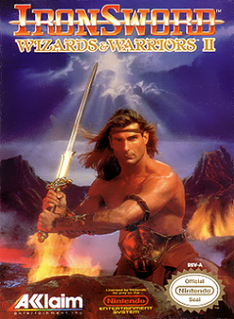 W
WIronsword: Wizards & Warriors II is a platforming action-adventure video game for the Nintendo Entertainment System (NES) developed by UK-based company Zippo Games, a subsidiary of Rare. The game was published by Acclaim and released in North America in December 1989 and in Europe on March 27, 1991. It is the sequel to Rare's 1987 title Wizards & Warriors. In Ironsword, the player controls the knight warrior Kuros as he ventures in the land of Sindarin. He must defeat the evil wizard Malkil, who has assumed the elemental forms of Earth, Wind, Fire, and Water. Kuros must collect the parts of and assemble the legendary "IronSword" in order to defeat Malkil, who resides at the top of IceFire Mountain.
 W
WIt's Mr. Pants is a puzzle video game developed by Rare. It was published by THQ for the Game Boy Advance (GBA) handheld game console in North America and Europe in 2004-2005. The game was published internationally on mobile phones by In-Fusio in both 2005 and 2006. The game stars Mr. Pants, a crudely drawn mascot formerly featured on Rare's website who had made cameo appearances in several prior Rare games.
 W
WJohn Elway's Quarterback, also known as John Elway's Quarterback Challenge and John Elway's Team Quarterback, is a 1987 football video game.
 W
WJordan vs. Bird: One on One is a 1988 basketball video game developed by Electronic Arts. It was released for the Commodore 64, Atari 8-bit, MS-DOS, Game Boy, Sega Genesis, NES. It was also available as a Tiger Handheld Electronic Game. It is the sequel to One on One: Dr. J vs. Larry Bird.
 W
WMarble Madness is an arcade video game designed by Mark Cerny and published by Atari Games and Midway Games in 1984. It is a platform game in which the player must guide a marble through six courses, populated with obstacles and enemies, within a time limit. The player controls the marble by using a trackball. Marble Madness is known for using innovative game technologies: it was Atari's first to use the Atari System 1 hardware, the first to be programmed in the C programming language, and one of the first to use true stereo sound.
 W
WMonster Max is an isometric adventure video game developed by Rare and published by Titus France. It was released for the Game Boy handheld game console in 1994. Monster Max was designed by Jon Ritman and Bernie Drummond and is very similar in both graphics and gameplay to Ritman and Drummond's 1987 title Head over Heels. The game sold poorly but received very positive reviews from critics. It was not released in North America.
 W
WNarc is a 1988 run and gun arcade game designed by Eugene Jarvis for Williams Electronics and programmed by George Petro. It was one of the first ultra-violent video games and a frequent target of parental criticism of the video game industry. The object is to arrest and kill drug offenders, confiscate their money and drugs, and defeat "Mr. Big". It was the first game in the newly restarted Williams Electronics coin-op division, after being acquired by Midway.
 W
WA Nightmare on Elm Street is a video game released on the Nintendo Entertainment System in October 1989 and 1990, loosely based on the A Nightmare on Elm Street franchise. It was developed by Rare and published by LJN. It should not be confused with an unrelated game with the same title for the Commodore 64 and IBM PC released in 1989.
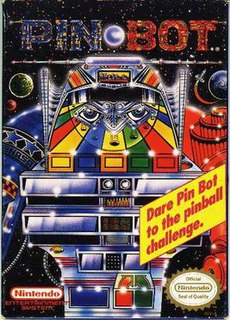 W
WPin Bot is a pinball video game developed by Rare and published by Nintendo for the Nintendo Entertainment System. It was released in North America in April 1990. It is a conversion of the pinball machine by the same name. The NES version of the game accurately reproduces some of the game-play and aesthetics of the pinball machine, while introducing new features and added challenges.
 W
WProject Dream was the codename of a role-playing video game (RPG) that served as the basis for the 1998 game Banjo-Kazooie. Developed by Rare, it was aimed for release on the Super Nintendo Entertainment System (SNES), and later the Nintendo 64 (N64). The plot revolved around a young boy, Edson, who caused trouble with pirates. The SNES version of Dream used an isometric perspective and had a fairy tale-like theme. After transitioning to the N64, the project became a more complex 3D RPG that had a greater emphasis on the pirate theme. Eventually, Dream was scaled back to a linear platform game in the vein of Donkey Kong Country (1994) that starred Banjo the bear, who became the protagonist of Banjo-Kazooie.
 W
WR.C. Pro-Am is a racing video game developed by Rare and published by Nintendo in North America in February 1988, and then in Europe on April 15. Presented in an overhead isometric perspective, a single player races a radio-controlled car around a series of tracks in vehicular combat. Each track qualifies its top three racers for the next track. Collectible power-up items improve performance, hazards include rain puddles and oil slicks, and missiles and bombs can temporarily disable opponents. Originally titled Pro Am Racing, it was ported to the Sega Genesis in 1992 as Championship Pro-Am, an enhanced remake with enhanced graphics and additional features. R.C. Pro-Am spawned two sequels: Super R.C. Pro-Am in 1991, and R.C. Pro-Am II in 1992.
 W
WR.C. Pro-Am II is a racing video game developed by Rare and released by Tradewest for the Nintendo Entertainment System on December 11, 1992. The game is the sequel to the 1988 R.C. Pro-Am and features similar gameplay with a wider variety of tracks, currency-based vehicle and weapon upgrades, and bonus stages. In R.C. Pro-Am II, four players, either human or artificial intelligence, race on a series of tracks to finish first while avoiding obstacles and hazards. The winner receives race points and money. The game features a multiplayer mode in which up to four human players can compete against each other simultaneously.
 W
WSilent Service is a submarine simulator video game designed by Sid Meier and published by MicroProse for various 8-bit home computers in 1985 and for 16-bit systems like the Amiga in 1987. A Nintendo Entertainment System port of Silent Service developed by Rare was published in 1989 by Konami in Europe and by Konami's Ultra Games subsidiary in North America. The follow-up game, Silent Service II, was released in 1990. Tommo purchased the rights to this game and digitally publishes it through its Retroism brand in 2015.
 W
WSlalom, originally released as VS. Slalom, is a skiing sports video game in which the player races in a series of downhill slalom runs while navigating past flags and obstacles before time expires. It was developed by Rare and first released by Nintendo in 1986 for the Nintendo VS. System in arcades. It was then released for the Nintendo Entertainment System (NES) in North America in March 1987 and in Europe later that year. The game was developed by Tim and Chris Stamper and its music was composed by David Wise.
 W
WSnake Pass is a puzzle-platform game developed and published by Sumo Digital for Microsoft Windows, Nintendo Switch, PlayStation 4, and Xbox One. Players play as a snake traversing floating islands in themed levels. Despite being a platform game, the player cannot jump and has to move similar to a real snake. The game was released in North America, Europe, and Australia in March 2017.
 W
WSnake Rattle 'n' Roll is a platform video game developed by Rare. It was published by Nintendo and released for the Nintendo Entertainment System in North America in July 1990 and in Europe on March 27, 1991. The game features two snakes, Rattle and Roll, as they make their way through eleven 3D isometric levels. A Mega Drive version was released by Sega in June 1993 with an extra level. Snake Rattle 'n' Roll was developed by Rare members Tim Stamper and Mark Betteridge. The music was composed by David Wise and was inspired by "Shake, Rattle and Roll" and other 1950s-era songs.
 W
WSolar Jetman: Hunt for the Golden Warpship is a multi-directional shooter video game developed by Zippo Games and Rare and published by Tradewest in North America and by Nintendo in Europe. It was released in North America on 14 October 1990 and in Europe on 26 September 1991 for the Nintendo Entertainment System. The game is the third installment of the Jetman series and was later re-released by Nintendo for their NES-based PlayChoice-10 arcade system in the United States in 1990.
 W
WStar Fox Adventures is a 2002 action-adventure game developed by Rare and published by Nintendo. The game had a long development cycle starting in 1997. Originally developed as Dinosaur Planet with Rare-created characters as the protagonists, Nintendo producer Shigeru Miyamoto convinced Rare to redesign the game as part of the Star Fox franchise. Its planned release on the Nintendo 64 was cancelled, with development ultimately shifting forward one hardware generation to the GameCube.
 W
WSuper Glove Ball is a game made by Rare in 1990 for the Nintendo Entertainment System, specifically designed to be played with the Power Glove controller. However, it can also be played with a standard NES controller. It was sold separately from the Power Glove.
 W
WSuper R.C. Pro-Am is a racing video game developed by UK-based video game company Rare for Nintendo's Game Boy handheld console. It was released in North America in June 1991 and in Europe on April 23, 1992; it was re-released in 1998 as part of Nintendo's Player's Choice series, which included all Game Boy titles which sold over one million copies. It is the follow-up to the Nintendo Entertainment System (NES) title R.C. Pro-Am, in which players race remote control cars from an out-of-vehicle perspective on a series of 24 tracks, avoiding obstacles and collecting items to improve performance in order to finish in the top three and qualify for the next track. The game can be played solo against three computer opponents, or two to four players can play simultaneously via the Game Link Cable or the Four Player Adapter.
 W
WTaboo: The Sixth Sense is a tarot card reading simulation developed by Rare and published by Tradewest for the Nintendo Entertainment System (NES) in 1989.
 W
WTengami is an adventure video game. It was released on iOS on February 20, 2014, on the Wii U on November 13, 2014, on Microsoft Windows and macOS on January 15, 2015, and on Android on November 5, 2015.
 W
WTime Lord is a side-scrolling action-platform video game developed by Rare and published by Milton Bradley Company for the Nintendo Entertainment System. It was released in North America in September 1990 and in Europe in 1991.
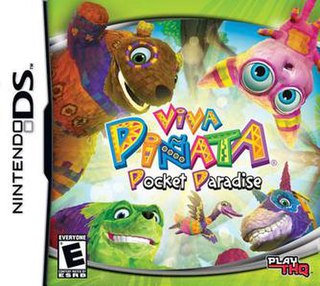 W
WViva Piñata: Pocket Paradise is a life simulation game developed by Rare, for the Nintendo DS video game console and based on Viva Piñata.
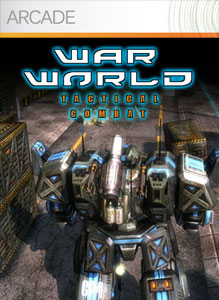 W
WWar World: Tactical Combat is a 3D mech combat simulator game developed and published by Australian company Third Wave Games. It was released on Microsoft Windows in 2005, and 2008 for the Xbox Live Arcade service.
 W
WWho Framed Roger Rabbit is an action-adventure video game created for the Nintendo Entertainment System by Rare and published by LJN in 1989. The single-player game is loosely based on the film of the same name and had combined elements of graphic adventure computer games with some more traditional action adventure gameplay. A different version of the game was also released for various computer systems in 1988.
 W
WWizards & Warriors is a platform video game developed by Rare for the Nintendo Entertainment System (NES). It was published by Acclaim and released in North America in December 1987, and in Europe on January 7, 1990. In the game, the player controls Kuros, "Knight Warrior of the Books of Excalibur", as he sets out in the Kingdom of Elrond to defeat the evil wizard Malkil. Malkil holds the princess of Elrond captive in Castle IronSpire, deep within the forests of Elrond. The player fights through forests, tunnels, and caves, while also collecting keys, treasure, weapons, and magic items.
 W
WWizards & Warriors III: Kuros - Visions of Power is a platforming and adventure video game for the Nintendo Entertainment System (NES). It was developed by UK-based company Zippo Games for Rare; it was published by Acclaim and released in North America in March 1992 and in Europe on January 21, 1993. It is the third and final installment in the Wizards & Warriors series and is the sequel to the 1989 Game Boy title Ironsword: Wizards & Warriors II; it also follows the 1990 release Wizards & Warriors X: The Fortress of Fear.
 W
WWizards & Warriors X: The Fortress of Fear is a 1990 side-scrolling platforming video game developed by UK-based company Rare and published by Acclaim Entertainment for the Game Boy handheld game console. Taking place after the events in Ironsword: Wizards & Warriors II, the game features the knight warrior Kuros; he sets out to the Fortress of Fear to defeat the evil wizard Malkil, who, after 17 years of dormancy, has captured Princess Elaine and has imprisoned her there.
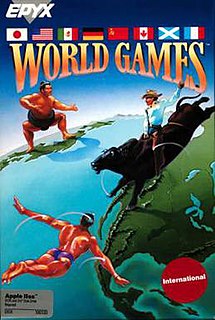 W
WWorld Games is a sports video game developed by Epyx for the Commodore 64 in 1986. Versions for the Apple IIGS, Amstrad CPC, ZX Spectrum, Sega Master System and other contemporary systems were also released. The NES version was released by Milton Bradley, and ported by Software Creations on behalf of producer Rare. A Virtual Console version was released in Europe on April 25, 2008.
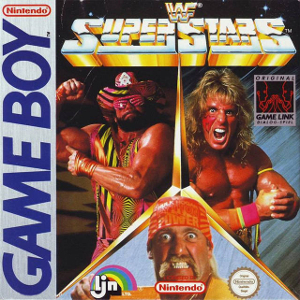 W
WWWF Superstars is a video game released on the Game Boy handheld console by Acclaim Entertainment, based on the WWF's syndicated television show of the same name. This game was the first WWF/E game for the Game Boy system.
 W
WWWF WrestleMania is a Nintendo Entertainment System (NES) video game created by Rare and published by Acclaim Entertainment in 1989. It was the first WWF licensed NES game and the second WWF game overall, the first being MicroLeague Wrestling. WrestleMania also marked the beginning of a long relationship between Acclaim and the WWF which lasted ten years. Released just months prior to WrestleMania V, it was intended to help build up to that event. The game's title screen features the tagline for WrestleMania III: "Bigger. Better. Badder."
 W
WWWF WrestleMania Challenge is a professional wrestling video game based on the World Wrestling Federation (WWF), released in 1990 for the Nintendo Entertainment System by LJN and in 1992 for the Family Computer by Hot-B.
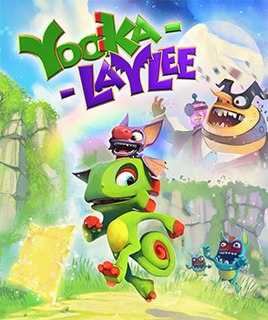 W
WYooka-Laylee is a platform game published by Team17 in 2017 for Windows, macOS, Linux, PlayStation 4, Xbox One, and Nintendo Switch. Developed by Playtonic Games, a group of former key personnel from Rare, Yooka-Laylee is a spiritual successor to the Banjo-Kazooie series released for the Nintendo 64 nearly 20 years prior. After years of planning to develop a new game, Playtonic Games initiated a Kickstarter campaign that attracted significant media coverage and raised a record-breaking sum of over GB£2 million. The game follows chameleon Yooka and bat Laylee on their quest to retrieve a magical book from an evil corporation.
 W
WYooka-Laylee and the Impossible Lair is a platform video game developed by Playtonic Games and published by Team17. As a spin-off of Yooka-Laylee (2017), the game was released digitally for Microsoft Windows, PlayStation 4, Nintendo Switch and Xbox One on October 8, 2019.